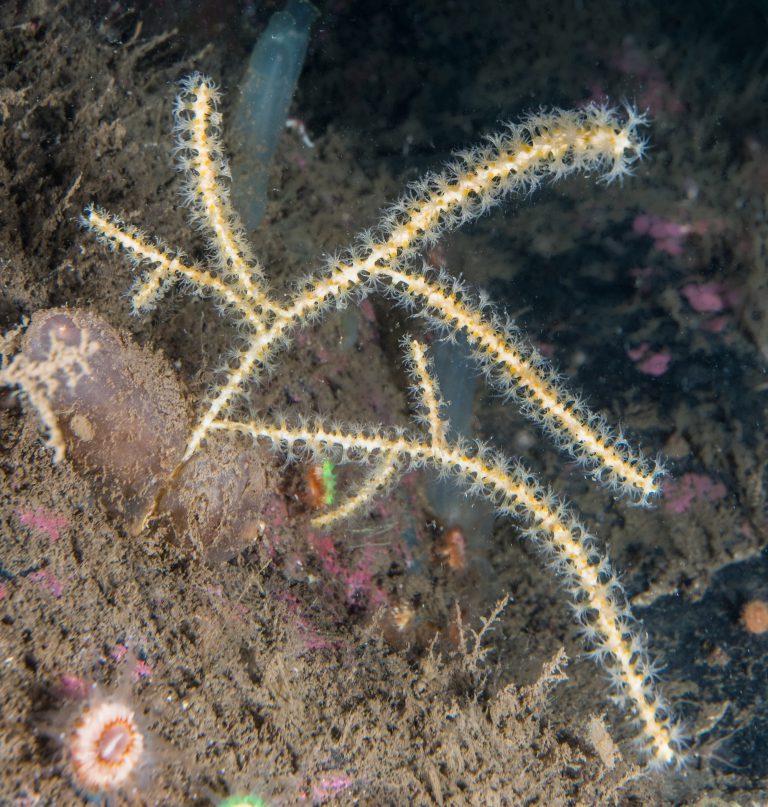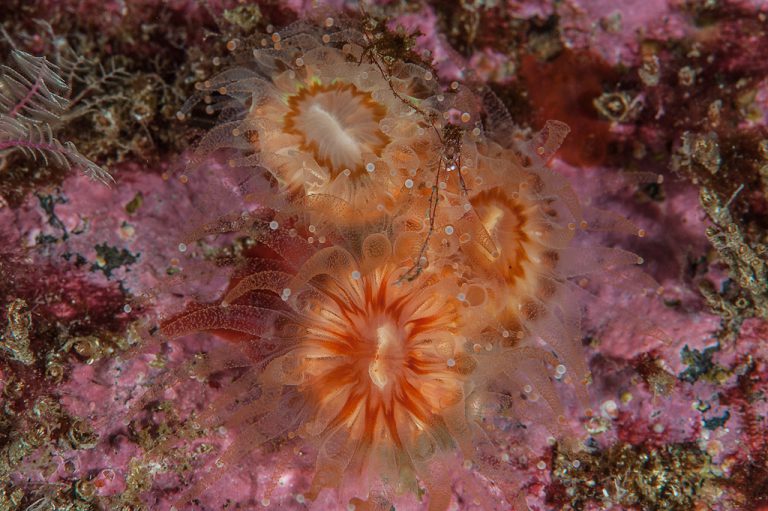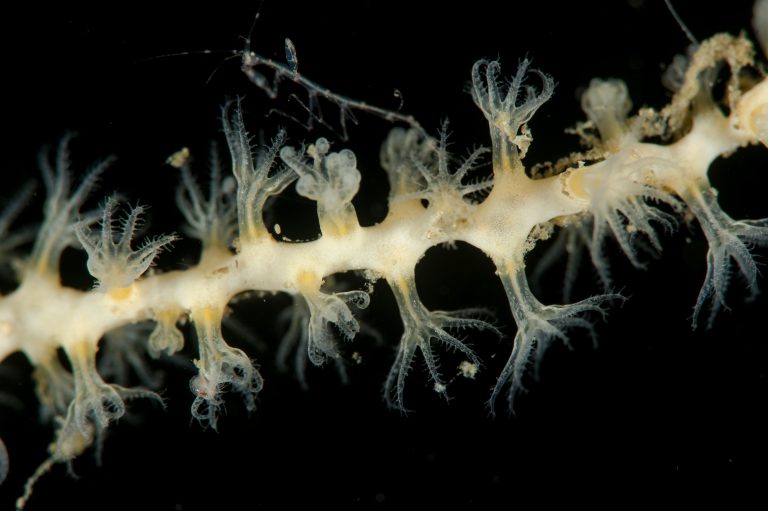Northern sea fans are colonies of animals that have a plant-like appearance.
They sometimes gather with sponges and cup corals to form rare communities on the seabed, fixed to the vertical and the upper surfaces of bedrock and boulders.
Their communities are also home to soft corals and large sea squirts, with crevices sheltering sea cucumbers, squat lobsters and wrasse.

Image: Swiftia pallida & Caryophyllia smithii, Mark Woombs
Scottish northern sea fan and sponge communities are of global importance.
All British records of northern sea fan habitats are from Scotland and their most southern sites are within the Hope Spot. If damaged, these northern sea fan and sponge communities may take many years or decades to recover.
The rarity and importance of this community means it is protected by the European Commission’s Habitats Directive and is included in the UK’s Biodiversity Action Plan.

Image: Caryophyllia smithii, the Devonshire cup coral, SNH
Threats
This community can be harmed by physical damage from fishing gear and by being smothered in organic waste from fish farms.
For these reasons, SNH says that ‘any activities that lead to the loss of entire patches of feature or where they are damaged to the extent that their function or provision of ecosystem services cannot be maintained should be considered a significant impact on national status’.
Northern Sea Fan and Sponge communities
Swiftia pallida & Caryophyllia smithii

Image: Swiftia pallida, SNH
Depth: 10-50m

